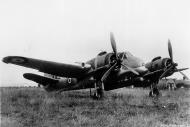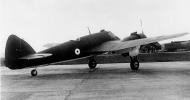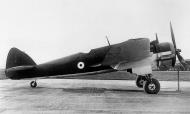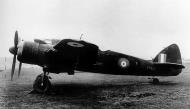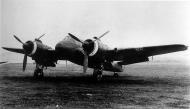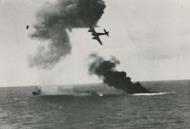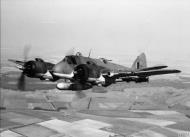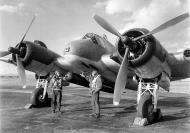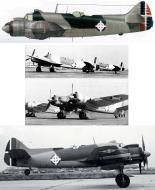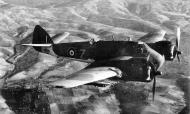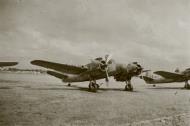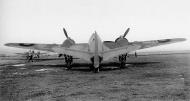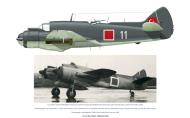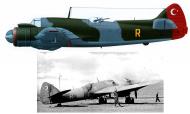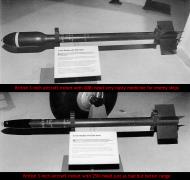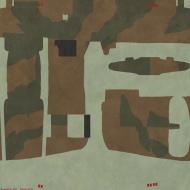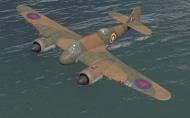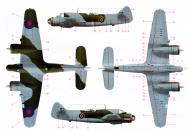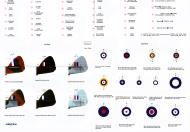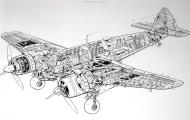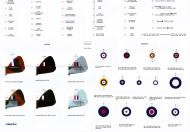Bristol Beaufighter mixed photographs
Beaufighter being armed with baby training bombs Tunisia 1943 01
Beaufighter MkIC RAF 2(C)OTU MI England May 1943 01
Beaufighter MkIC RAF prototype EL233G carrying British 18in torpedo England IWM MH4558
Beaufighter MkIC RAF prototype EL233G carrying British 18in torpedo England IWM MH6124
Beaufighter MkIC RAF prototype EL233G carrying British 18in torpedo England IWM MH6125
Beaufighter MkIF RAF prototype R2054 camouflage Dark Green and Earth Night White IWM MH3175
Beaufighter MkIF RAF prototype R2054 camouflage Dark Green and Earth Night White IWM MH4555
Beaufighter MkIF RAF prototype X7540 built by Weston super Mare plant England IWM MH5985
Beaufighter MkIF RAF prototype X7579 used for radar testing IWM MH4556
Beaufighter MkIF RAF prototype X7579 used for radar testing IWM MH6126
Beaufighter MkIIF RAF prototype R2058 England July 1940 Profile 0A
Beaufighter MkIIF RAF prototype R2270 England IWM MH4560
Beaufighter MkI RAF prototype X2057 built by Bristol with Fairey Youngman air brakes IWM MH5686
Beaufighter MkTT10 RAF Target Towing NT913 England post war Profile 0A
Beaufighter MkTT RAF RD761 used for target towing Seletar Singapore 16th May 1960 Profile 0A
Beaufighter MkTT RAF RD761 used for target towing Seletar Singapore 16th May 1960 Profile 0B
Beaufighter MkVIC JL832 carrying British 18in torpedo IWM CH9766
Beaufighter MkVIF Dominica bought 10 aircraft coded 306 315 nos 307 308 at Filton 1948 01
Beaufighter MkVIF Dominican Air Force 308 Fuerza Aerea de Republica Dominicana Clavework Profile 0A
Beaufighter MkVIF Dominican Air Force 308 Fuerza Aerea de Republica Dominicana Profile 0A
Beaufighter MkX Balkan Air Force Z NV135 over Balkans IWM C4868
Beaufighter MkX IDF 103Sqn 171 RD448 Israel Oct 1948 Profile 0A-0B
Beaufighter MkX IDF 103Sqn White 71 Israel Oct 1948 Profile 0A
Beaufighter MkX Portugese Air Force 8 Esquadrilla BF10 Portugal 1945 Profile 0A
Beaufighter MkX RAF LZ172 built at Weston seen from the tail IWM CN18584
Beaufighter MkX Turkish Air Force R0598 Turkey 1947
Beaufighter MkX Turkish Air Force White 11 Turkey 1947 Clavework Profile 0A-0B
Beaufighter MkX Turkish Air Force Yellow R NV215 Turkey 1944 Profile 0A
Beaufighter TT10 RAF 34Sqn 8QB SR911 Teversham 01
Bristol 156 Beaufighter prototype R2052 Air Ministry Specification F17.39 July 1939 IWM MH4554 MH5685
British 3 inch aircraft rockets bad ass medicine for any enemy 01
Color profile showing RAF camouflage used for a Bristol Beaufighter MkX 0A-0B
Cutaway section showing the airframe of a Bristol Beaufighter
RAF Bristol Beaufighters at work shooting up a German coastal vessel 1944 01-03
Very large color profile showing RAF camouflage used for a Bristol Beaufighter MkX 0A-0B
Beaufighter VIF RAF 96Sqn ZJ-R V8748 being re armed at Honiley 23rd March 1943
Beaufighter VIF V8748/ZJ-R of No. 96 Squadron being re-armed at Honiley, 23 March 1943. The armourers are feeding belts of ball and high-explosive incendiary ammunition into the magazines of the aircraft's four 20mm Hispano cannon.
Beaufighter VI RAF 144Sqn J L832-1 Tain Scotland 25th April 1943
'Torbeau'. Experiments in 1942 proved that the Beaufighter would make a capable torpedo-bomber. This Mk VI, J L832-1 of No 144 Squadron, based at Tain in Scotland, was photographed on 25 April 1943. (IWM)
Beaufighter TT10 RAF 34Sqn 8QB SR911 Teversham
SR911 / 8Q-B Beaufighter TT.10 target tug of 34 Squadron at its detached base at Teversham. Converted from Beaufighter X, one of only 10 to be completed at Weston-super-Mare from an order for 250 aircraft.
Beaufighter TFXs RAF 144Sqn anti-shipping attack Fedefjord Norway IWM HU93033
Aerial oblique photographs taken during the last anti-shipping attack carried out by the Dallachy Strike Wing prior to the surrender of Germany, on a convoy lying in Fedefjord, Norway. (1): four Bristol Beaufighter TF Mark Xs can be seen firing on shipping moored close to the cliffs, and anti-aircraft defences on the shore and surrounding hills.
Imperial War Museum IWM HU 93033 https://www.iwm.org.uk/collections/item/object/205023374
Beaufighter TFXs RAF 144Sqn PLU RD433 anti-shipping attack Fedefjord Norway IWM HU93034
Aerial oblique photographs taken during the last anti-shipping attack carried out by the Dallachy Strike Wing prior to the surrender of Germany, on a convoy lying in Fedefjord, Norway. (2): a Beaufighter fires a salvo of rocket projectiles at enemy positions on the hills above the fjord (extreme left), while a parachute and cable (PAC) rocket fired from one of the vessels moored close to the cliffs (right) forces the pilot of RD433 'PL-U' of No. 144 Squadron RAF to take sudden avoiding action, resulting in a wing stall.
Imperial War Museum IWM HU 93034 https://www.iwm.org.uk/collections/item/object/205023375
Beaufighter TFXs RAF 144Sqn PLU RD433 anti-shipping attack Fedefjord Norway IWM HU93035
Aerial oblique photographs taken during the last anti-shipping attack carried out by the Dallachy Strike Wing prior to the surrender of Germany, on a convoy lying in Fedefjord, Norway. (3): Bristol Beaufighter TF Mark X, RD433 'PL-U', of No. 144 Squadron RAF, having wing-stalled while avoiding a PAC rocket, plunges out of control into the fjord (bottom left); Flying Officer E Chadwick (pilot) and Flying Officer D A Forrester (navigator) are both killed. Another Beaufighter clears the headland as its rocket projectiles explode on enemy positions below (upper left), while RPs fired from the photographing aircraft ('PL-P'), close in on targets near the shoreline (centre). Two further aircraft were also lost from the force of 20 Beaufighters led by Wing Commander A Gadd, which was escorted by twelve North American Mustangs, and accompanied by two Vickers Warwicks for air-sea rescue. The sortie was one of the most difficult ever undertaken by the strike wings and resulted in the merchant vessel PALMYRA (seen lower right) being seriously damaged.
Imperial War Museum IWM HU 93035 https://www.iwm.org.uk/collections/item/object/205023376
Bristol Beaufighter VIF E X8166 at Castel Benito Libya IWM CNA3947
Local Arabs and their camels pass by Bristol Beaufighter Mark VIF, X8166 'E', raised by its tail while undergoing gun maintenance and harmonisation at Castel Benito, Libya.
Imperial War Museum IWM CNA 3947 https://www.iwm.org.uk/collections/item/object/205211937
Beaufighter RAF Z KV136 IWM C4869
no comments
Imperial War Museum IWM C 4869 https://www.iwm.org.uk/collections/item/object/205211967
Citations:
- Ashworth 1992, p. 115.
- Buttler p38
- Buttler p40
- with Hercules III engines
- Squadron.com: Bristol Beaufighter VI
- Franks 21002, p. 171.
- Hall 1995, p. 24.
- Gilman and Clive 1978, p. 314.
- Bowyer 1994, p. 90.
- Thetford, 1976. p.144
- Buttler, Tony. Secret Projects: British Fighters and Bombers 1935–1950 (British Secret Projects 3). Leicester, UK: Midland Publishing, 2004. ISBN 1-85780-179-2.
- Buttler p63
- Franks 2002, pp. 65–67.
- Franks 2002, pp. 70–72.
- Fighter Collection Duxford – (website accessed 20/07/10)
- Australian National Aviation Museum – DAP Mark 21 Beaufighter
- 'Beaufighter 156 Mk 21 A8-186.' Camden Museum of Aviation. Retrieved: 1 August 2010.
- Bridgeman 1946, pp. 110–111.
- March 1998, p. 57.
Bibliography:
- Ashworth, Chris. RAF Coastal Command: 1936–1969. London: Patrick Stephens Ltd., 1992. ISBN 1-85260-345-3.
- Bingham, Victor. Bristol Beaufighter. Shrewsbury, UK: Airlife Publishing, Ltd., 1994. ISBN 1-85310-122-2.
- Bowyer, Chaz. Beaufighter. London: William Kimber, 1987. ISBN 0-7183-0647-3.
- Bowyer, Chaz. Beaufighter at War. London: Ian Allan Ltd., 1994. ISBN 0-7110-0704-7.
- Buttler, Tony. British Secret Projects - Fighters and Bombers 1935-1950. Hinckley, UK: Midland Publishing, 2004. ISBN 1-85780-179-2.
- Bridgeman, Leonard, ed. "The Bristol 156 Beaufighter." Jane's Fighting Aircraft of World War II. London: Studio, 1946. ISBN 1-85170-493-0.
- Flintham, V. Air Wars and Aircraft: A Detailed Record of Air Combat, 1945 to the Present. New York: Facts on File, 1990. ISBN 0-8160-2356-5.
- Franks, Richard A. The Bristol Beaufighter, a Comprehensive Guide for the Modeller. Bedford, UK: SAM Publications, 2002. ISBN 0-9533465-5-2.
- Gilman J.D. and J. Clive. KG 200 (novel). London: Pan Books Ltd., 1978. ISBN 978-1-902109-33-6.
- Hall, Alan W. Bristol Beaufighter (Warpaint No. 1). Dunstable, UK: Hall Park Books, 1995.
- Howard. "Bristol Beaufighter: The Inside Story". Scale Aircraft Modelling, Vol. 11, No. 10, July 1989.
- Innes, Davis J. Beaufighters over Burma – 27 Sqn RAF 1942–45. Poole, Dorset, UK: Blandford Press, 1985. ISBN 0-7137-1599-5.
- March, Daniel J., ed. British Warplanes of World War II. London: Aerospace Publishing, 1998. ISBN 1-874023-92-1.
- Mason, Francis K. Archive: Bristol Beaufighter. Oxford, UK: Container Publications.
- Moyes, Philip J.R. The Bristol Beaufighter I & II (Aircraft in Profile Number 137). Leatherhead, Surrey, UK: Profile Publications Ltd., 1966.
- Parry, Simon W. Beaufighter Squadrons in Focus. Walton on Thames, Surrey, Uk: Red Kite, 2001. ISBN 0-9538061-2-X.
- Scutts, Jerry. Bristol Beaufighter (Crowood Aviation Series). Ramsbury, Marlborough, Wiltshire, UK: The Crowood Press Ltd., 2004. ISBN 1-86126-666-9.
- Scutts, Jerry. Bristol Beaufighter in Action (Aircraft number 153). Carrollton, Texas: Squadron/Signal Publications, 1995. ISBN 0-89747-333-7.
- Spencer, Dennis A. Looking Backwards Over Burma: Wartime Recollections of a RAF Beaufighter Navigator. Bognor Regis, West Sussex, UK: Woodfield Publishing Ltd., 2009. ISBN 1-84683-073-7.
- Thetford,Owen. Aircraft of the Royal Air Force since 1918. Putnam & Company, 1976. ISBN 0-370-10056-3.
- Thomas, Andrew. Beaufighter Aces of World War 2. Botley, UK: Osprey Publishing, 2005. ISBN 1-84176-846-4.
- Wilson, Stewart. Beaufort, Beaufighter and Mosquito in Australian Service. Weston, ACT, Australia: Aerospace Publications, 1990. ISBN 0-9587978-4-6.
Magazine References: +
- Airfix Magazines (English) - http://www.airfix.com/
- Avions (French) - http://www.aerostories.org/~aerobiblio/rubrique10.html
- FlyPast (English) - http://www.flypast.com/
- Flugzeug Publikations GmbH (German) - http://vdmedien.com/flugzeug-publikations-gmbh-hersteller_verlag-vdm-heinz-nickel-33.html
- Flugzeug Classic (German) - http://www.flugzeugclassic.de/
- Klassiker (German) - http://shop.flugrevue.de/abo/klassiker-der-luftfahrt
- Le Fana de L'Aviation (French) - http://boutique.editions-lariviere.fr/site/abonnement-le-fana-de-l-aviation-626-4-6.html
- Le Fana de L'Aviation (French) - http://www.pdfmagazines.org/tags/Le+Fana+De+L+Aviation/
- Osprey (English) - http://www.ospreypublishing.com/
- Revi Magazines (Czech) - http://www.revi.cz/
Web References: +
- History of RAF Organisation: http://www.rafweb.org
- Wikipedia, the free encyclopedia: http://en.wikipedia.org/
 Editor for Asisbiz: Matthew Laird Acred
Editor for Asisbiz: Matthew Laird Acred
If you love our website please add a like on facebook
Please donate so we can make this site even better !!


OTU-MI-England-May-1943-01.jpg)
